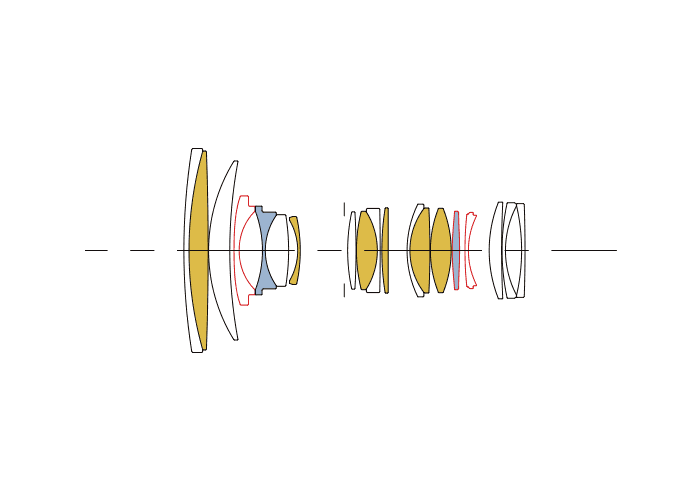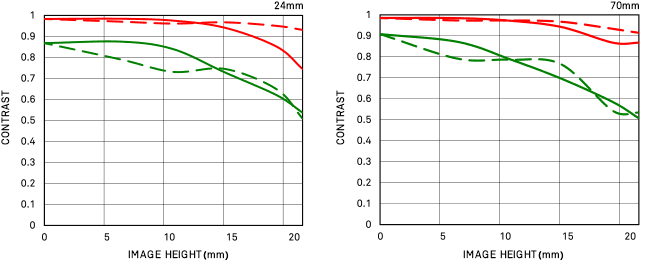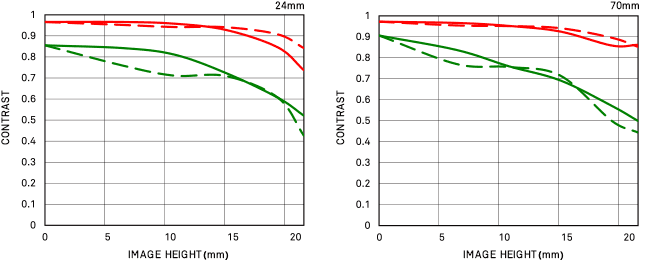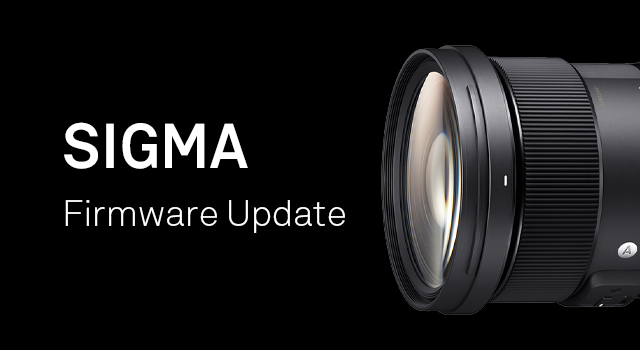24-70mm F2.8 DG DN | A

• Best-in-class performance
• Large-aperture standard zoom lens
• High resolution throughout the entire zoom range
• Designed especially for mirrorless
• Zoom lock switch
• Lens hood with a lock
• Dust- and splash-proof structure
• Compatible with the Lens Aberration Correction
• Designed to minimize flare and ghosting
• Evaluation with Sigma’s own MTF measuring system: A1
• High-precision, rugged brass bayonet mount
• Available in Sony E-mount and L-Mount
| Product Lines | Art | |
|---|---|---|
| Youtube Videos | ||
| Instagram Widget | ||
| Construction | 19 Elements in 15 Groups | |
| Lens Type | Standard | |
| Sensor Size | Full Frame | |
| Angle of view | 84.1° – 34.3° | |
| Number of diaphragm blades | 11 (Rounded Diaphragm) | |
| Minimum aperture | F22 | |
| Minimum focusing distance | 18 - 38 cm / 7.1 - 15.0 in. | |
| Maximum magnification ratio | Wide 1:2.9 - Tele 1:4.5 | |
| Dimensions (diameter x length) | L-mount ⌀ 87.8 mm x 122.9 mm |
|
| Filter diameter | 82mm | |
| Edition number | A019 | |
| Accessories | Case, Petal Type Hood with Lock (LH878-03) | |
| EAN | L-mount |
|
Lens Construction


Geometrical MTF Chart


Diffraction MTF Chart


Linear focus / Non-linear focus (for L-Mount only)
A focus movement method of interchangeable lenses for mirrorless cameras (DN lens) in relation to the rotational angle of the focus ring during manual focusing.
With "non-linear focus," the amount of focal point movement varies depending on the focus ring rotational speed.
With linear focus, if the focus ring rotational angle is the same, the amount of focal point movement remains the same regardless of the focus ring rotational speed.
Dust and Splash Resistant Structure
This lens features a highly effective dust and splash resistant structure with special sealing at the mount connection, manual focus ring, zoom ring, and cover connection.
*Although this construction allows the lens to be used in light rain, it is not the same as being waterproof, so please prevent large amounts of water from splashing on the lens. It is often impractical to repair the internal mechanism, lens elements and electric components if they are damaged by water.
Compatible with Lens Aberration Correction
Matching the optical characteristics of the lens, this function performs in-camera corrections of peripheral illumination, chromatic aberrations, distortion, and more, to further enhance image quality.
*Function available on supported cameras only. Available corrections or auto correction functionality may vary depending on the camera model.
*On cameras where lens aberration correction is controlled with 'ON' or 'OFF' in the camera menu, please set all aberration correction functions to 'ON'(AUTO).
High-precision, rugged brass bayonet mount
The brass mount combines high precision with rugged construction. Its treated surfaces and enhanced strength contribute to the exceptional durability of the lens.
Water and oil repellent coating
Incorporates a water and oil-repellent coating that allows water to be wiped away easily and prevents oil and fat from sticking to the surface, even in challenging shooting conditions. At the same time, the maintenance of the lens surface becomes easier.
AFL button
the AFL button can be assigned with various functions widens the range of operations available on the lens.
High-precision, rugged brass bayonet mount
The brass mount combines high precision with rugged construction. Its treated surfaces and enhanced strength contribute to the exceptional durability of the lens.
Zoom lock switch (Wide end)
The zoom lock switch fixes the zoom ring at the widest end, preventing it from rotating and causing the lens barrel to extendunder its own weight during transportation.
Rounded diaphragm
The polygonal shape of a conventional iris dia phragm causes out-of-focus light points to appear polygonal. A rounded diaphragm is designed to pro duce rounded out-of-focus light points when opened to near maximum aperture. This creates attractive bokeh effects in many situations, such as when pho tographing a subject against an out-of-focus surface of waater from which light is being reflected.
Nano Porous Coating
The super multi-layer coating is combined with Sigma's unique coating technology "NPC (Nano Porous Coating)". The lens has been designed to be less susceptible to strong incident light such as backlight.
"NPC (Nano Porous Coating)" incorporates porous silica as the coating material. The porous silica layer has nano-sized holes with air inside. Having holes of this size enables a large reduction in the refractive index, allowing the reflectance to be lowered more than conventional anti-reflective coatings. As a result, reflected light causing flares and ghosting is sharply reduced, achieving clear image quality.
Exclusive low-dispersion glass
The degree to which light is refracted by glass depends on the light's wavelength. This fact causes different colors of light to focus at slightly different points. The result is chromatic aberration, the color fringing that is particularly noticeable in telephoto lenses. Most chromatic aberration can be removed by combining a high-refractivity convex lens element with a low-refractivity concave element. Yet residual chromatic aberration known as "secondary spectrum" may still remain. To minimize this secondary spectrum, which can be a serious issue with conventional lenses, Sigma lenses feature up to three types of exclusive low-dispersion glass offering superior performance: ELD (Extraordinary Low Dispersion), SLD (Special Low Dispersion) and FLD ("F" Low Dispersion). In particular, FLD glass offers ultra-low dispersion in combination with high transmittance and the anomalous dispersion characteristics of fluorite. Meticulous deployment of these types of exclusive low-dispersion glass and optimization of power distribution gives Sigma lenses superlative image rendition undiminished by residual chromatic aberration.
